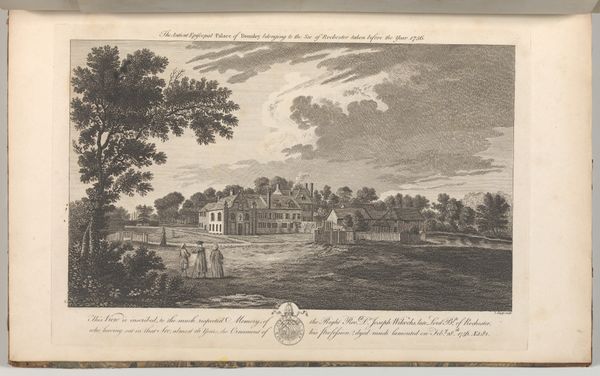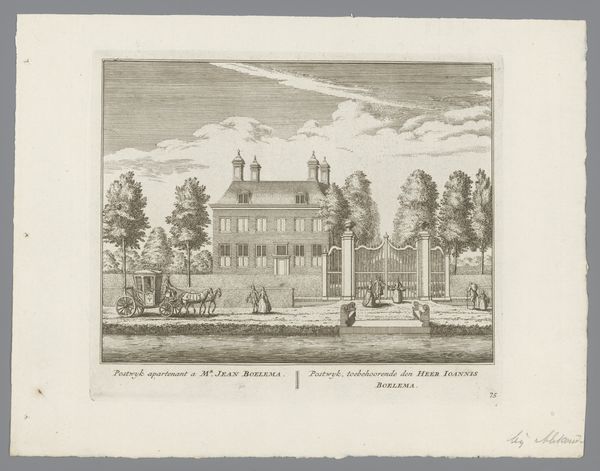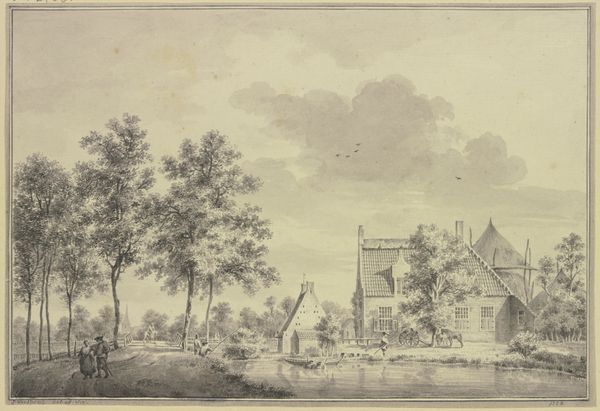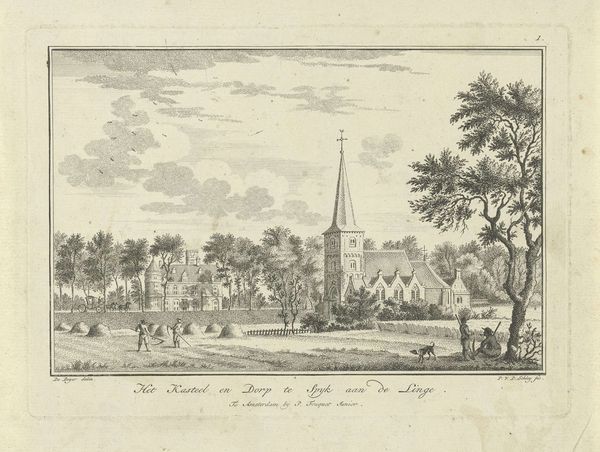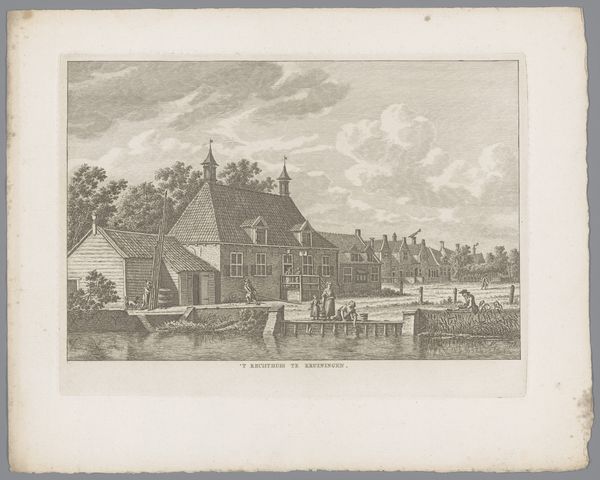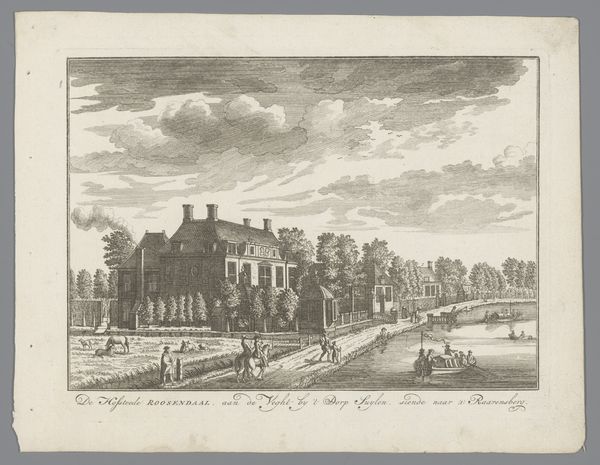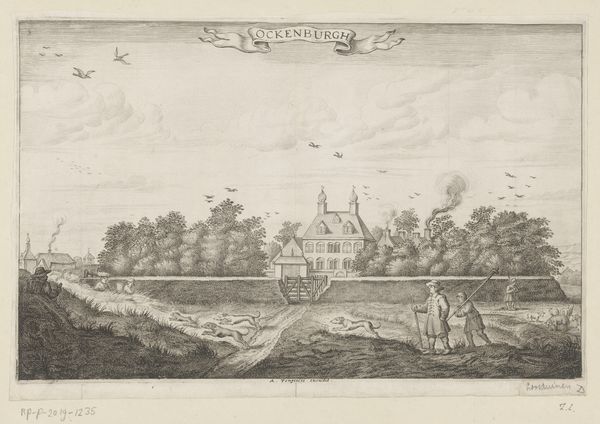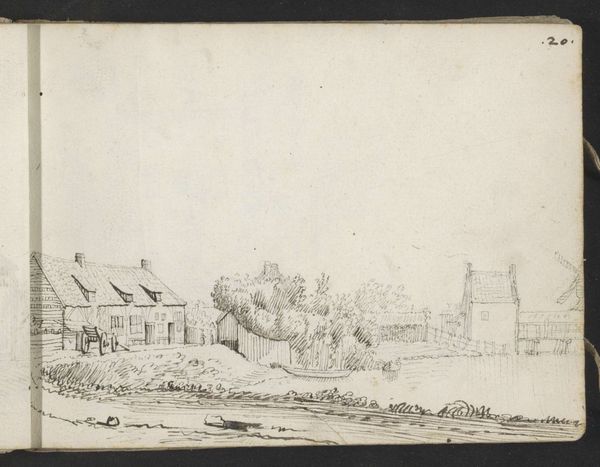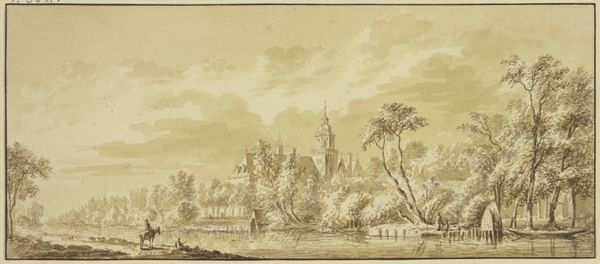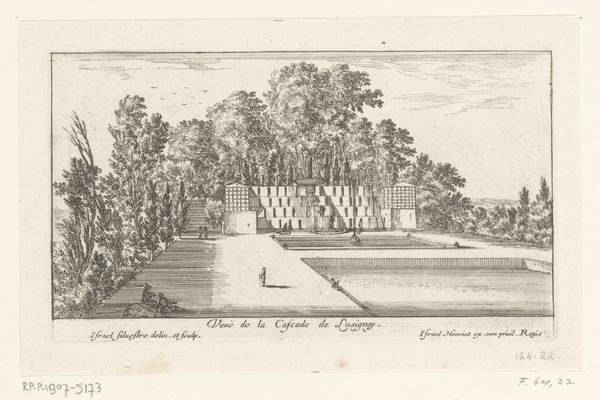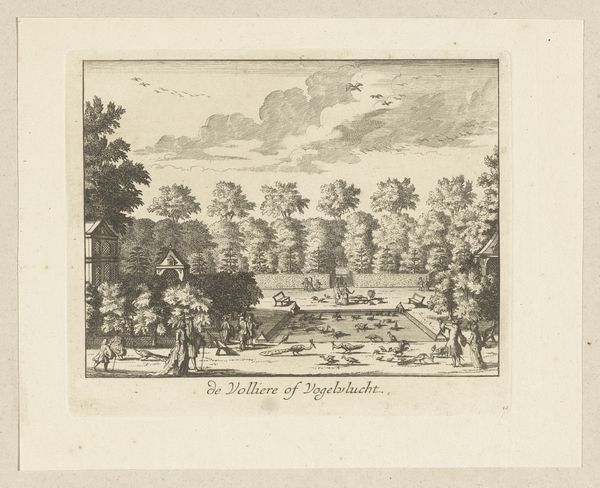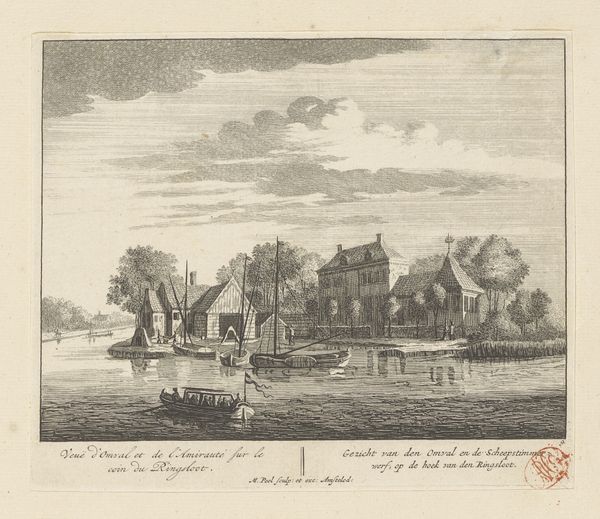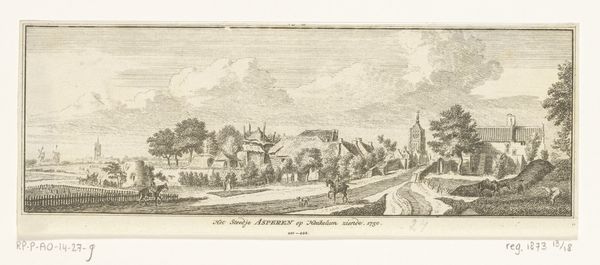
drawing, pencil
#
drawing
#
dutch-golden-age
#
landscape
#
pencil
#
cityscape
Dimensions: height 201 mm, width 316 mm
Copyright: Rijks Museum: Open Domain
Curator: What a remarkably placid scene. There's such quietude to this Dutch landscape. Editor: Indeed. This is "View of Oosterwijk Castle" by Johan Johansz. Balen, created in 1764. It's a pencil drawing, offering a glimpse into the architecture and pastoral life of the time. I find it revealing to see how even depictions of landscape are rooted in representations of labor. Note the evidence of animal husbandry right there in the foreground! Curator: I do notice those cattle grazing so calmly. But for me, the beauty is in the meticulous detail achieved with the pencil. You can almost feel the texture of the stone in the castle, and the layering creates such depth. The material constraints—the very limitations of pencil on paper—somehow add to its evocative quality. This simple scene embodies the lives lived within. What statement could it make now? Editor: What kind of lives? I find myself drawn to the way this drawing romanticizes rural life. Where are the farmers and workers whose labor sustained this place? Who inhabited and benefitted from that castle? Depictions like these, created by and for a certain class, played a role in shaping societal views—and still do. Curator: It’s a constructed landscape, certainly, a product of both material and ideology. But does that diminish the skill involved in its execution or its power to move us? Look at the precision with which he renders the light reflecting off of the building surfaces. Editor: I am less interested in authorial "skill" and artistic intentionality, and more interested in what purpose the construction of "skill" fulfills. It makes me consider who has the time and resources for drawing at all and also who profits when landscapes of castles reinforce systems of class and power that disenfranchise laborers in those same landscapes? But perhaps such art reminds us to question what exists at the center and what falls into the periphery of how we view the world. Curator: Perhaps. I still appreciate the work, but understanding the context adds a deeper, critical layer to the experience. It allows me to better grasp the complex negotiations between artistic vision and the forces of society and the structures that both impede and encourage artistry to become a viable life pursuit. Editor: Absolutely. Context enriches the conversation and ultimately challenges us to examine both what we see and how we've been taught to see it.
Comments
No comments
Be the first to comment and join the conversation on the ultimate creative platform.
